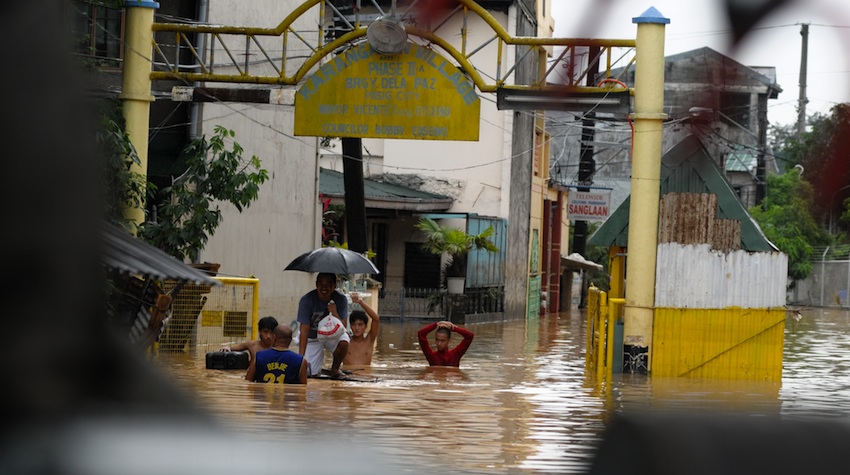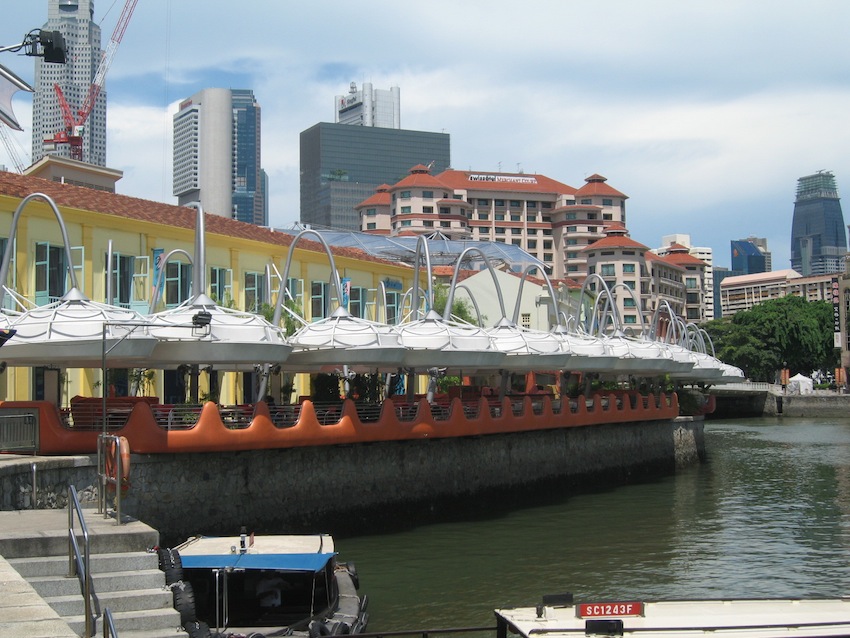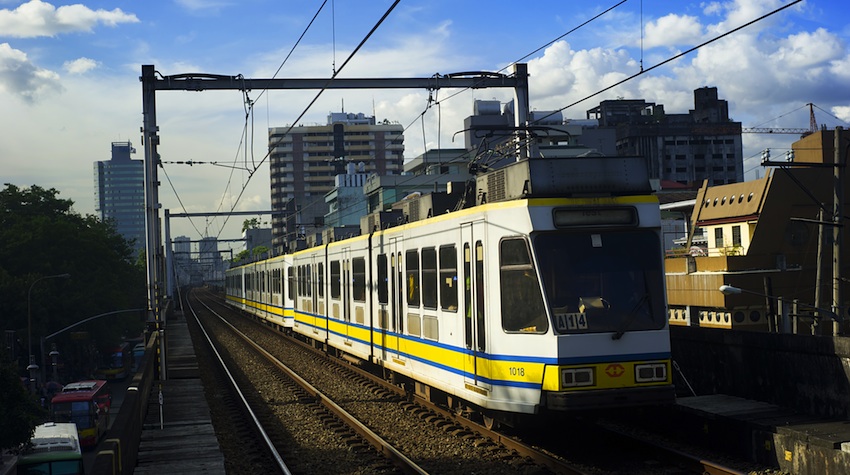“Make no little plans. They have no magic to stir men’s blood and probably will not themselves be realized,” celebrated American architect and urban planner Daniel Burnham once said.
These words capture the very essence of Burnham’s spirit—one that represents his vision on how highly livable cities should be designed. Burnham incidentally was also the man behind Manila’s original masterplan commissioned by the Commonwealth government in 1906, whose objective was to transform the city from an old colonial outpost to a modern urban area adapted to changed times and modern needs.
In his masterplan, Burnham envisioned Manila as a city of efficient road systems, of quaint waterways used for transportation, and of waterfronts, promenades, parkways, and neoclassical buildings. Manila, in Burnham’s mind, was to become like many of the world’s well-planned cities where every resident is a short walking distance from a park, places of work, and leisure and recreational centers.
“This is just the sort of urban planning model that the Philippines should have used, but didn’t,” said noted Filipino architect and urban planner Felino “Jun” Palafox Jr.
What Happened?
If Metro Manila’s urban planning were the computer game SimCity, the player—which will be our political leaders, no less—has done (and is doing) an abysmal job. Mass transit stations were built close to exclusive gated communities and huge military camps, the residents of which don’t even take public transport. Roads and parking spaces unable to keep up with the ever-increasing number of vehicles. Infrastructure incapable of handling—let alone mitigating the effects—natural calamities. And an army of low-income residents pushed into the corners of the metropolis, toiling and forever priced out of the housing market.
This roughly describes the type of job our political leaders have accomplished in terms of urban planning, which hasn’t actually progressed since the Spanish times, Palafox said.
Urban planning wise, our obsolete practices have not progressed from the 16th-century practice of intramuros and extramuros. You live inside the walls [intramuros] if you’re rich and powerful, and outside the walls [extramuros] if you’re peasant, Indio, or Sangley, which today are equivalent to Metro Manila’s modern-day city employees.”
Manila’s old walled city of Intramuros
Our urban planning practice of segregating areas has not progressed since the Spanish times, says Palafox. Similar to Intramuros (above), if you’re rich you belong inside the walls; outside if you’re indio, sangley, or peasant.

Some blame too much democratic process, which hampers any leader’s efforts to fulfill even the most sensible plan. Palafox says our politicians took over the work of urban planners. “In the Philippines, unfortunately, the practice of urban planning is dominated by politics, and urban planners are marginalized even as a profession [whereas] elsewhere they are appreciated and recognized and their recommendations followed.”
Wrong Model
Perhaps due to our affinity to Hollywood, the Philippines has for decades been following the wrong model for urbanism, said Palafox. Our leaders envision Metro Manila as a driven city—an urban area of seemingly endless roads where elevated highways are built atop another, of concrete megaliths that are crowded during the day and empty at night, and of people who toil inside these concrete blocks but live in another part of the city, preferably in one of those identical suburban houses with a two-car garage. Something like our version of the American dream.
This is just the sort of urban planning we should move away from, said Palafox. Indeed, why follow a model that’s been proven time and again to be flawed? “We’re trying too hard to become like Los Angeles or Detroit, and we don’t even manufacture cars.”
“There are a number of North American, European, and Australian cities that are doing well. These include Boston, San Francisco, Vancouver, Zurich, Melbourne, and Sydney, which all boast mixed-use, mixed-income, walkable developments,” said Palafox. “Mobility is not a problem in these cities as their residents can either walk, bike, or take public transport.”
Balancing Needs
If a well-planned city balances the needs of its residents, the environment, and commerce, then there’s definitely nothing balanced at what’s happening with Metro Manila at the moment.
Luxurious developments and gated communities sit side by side slums, while countless office workers spend hours commuting from their workplaces to home. Yes, mixed-use developments and townships are on the rise, but the great majority of homes peddled by these developments cater only to haves, while the have-nots get pushed into the dank corners of the city.
Safety from risks, both natural and man-made, is also a major concern. Who will forget the flooding caused by Typhoon Ondoy in 2009. “I’ve given more than 100 recommendations to the current president and his predecessor in the aftermath of the disaster,” said Palafox. “One of those recommendations is addressing the hazards—through architecture, engineering, and urban planning—before they become disasters.”

Ondoy 2009
The Ondoy disaster in 2009 showed how incapable Metro Manila’s infrastructure is from mitigating the impact of flooding.
Security is also an issue, especially now that the metropolis is fast becoming a 24-hour urban area. Our government fails miserably at keeping us safe—mugging and accidents are a staple of our primetime news, and outside the city’s guarded subdivisions and central business districts, venturing outdoors can be perilous.
“I’m a firm believer of the triple bottom-line approach to development: people and social equity first, then the environment, then profits or economic growth,” said Palafox. “This has been proven the world over to be the best practice, which seems to have some kind of resistance in the Philippines.”
Sadly, the prevailing practice now in real estate development is highest and best use and profit, profit, and profit. “Never mind the poor, and never mind heritage and preservation.”
What Can Be Done?
Many enlightened leaders of the world, such as Singapore’s Lee Kuan Yew, consult the best urban planners, architects, and engineers before they construct the built environment, said Palafox. This is the sort of practice that we Filipinos should replicate.
However, there are Philippine cities that are taking urban planning very seriously. One of which is San Juan, whose city government just consulted Palafox Associates to come up with a comprehensive land use and zoning plan. “Our plan for San Juan moves beyond land use and zoning,” said Palafox. “We also take into consideration disaster preparedness, transportation, and mobility.”
Although the Philippines has got a long way to go before we achieve the sort of sustainable urbanism the likes of Singapore and Hong Kong have achieved, there are ways we can get there. Palafox lists five recommendations.
1. It’s All about Urban Renewal
According to Palafox, the 21st century is a century of urban renewal. “We replan, redesign, and rebuild, and not necessarily create new ones, in the hope of achieving urban renaissance.” In fact, Metro Manila has got plenty of areas, specifically in downtown Manila itself, that experienced urban decay over the last few decades, and will provide the city with so much opportunity to practice good urban renewal.
Two great examples we could use as a model is New York’s Meatpacking District and Singapore’s Clarke Quay. The former successfully transformed itself from a seedy neighborhood in the 1980s to a gentrified real estate hotspot. Clarke Quay, on the other hand, was revived from being a polluted riverside quay well until the mid-20th century, to a flourishing commercial, residential, and entertainment area.

2. Our Government Should Be Serious About Urban Planning
Between the 1970s and today, urban planning was not so seriously implemented in the Philippines, said Palafox. One thing also peculiar to the Philippines is that infrastructure development takes so long from concept to completion. For example, six circumferential and radial roads to serve the then growing City of Greater Manila were proposed in the mid-1940s by the American Corps of Engineers. This day, only C4—the perpetually congested EDSA—has been completed. “This is appalling given our local governments have budget for beauty contests and yet they have none for proper urban planning,” said Palafox.
Another example is the metropolis’ mass transit system. After Manila’s Light Rail Transit (LRT) was completed in 1985, not a single kilometer of train track was constructed for 14 years, when EDSA MRT commenced operation 1999. It took another 11 years for additional train tracks were added to LRT, when the track was extended from Monumento in Caloocan to North Avenue in Quezon City.
For many years, not a single kilometer of train track was constructed in Metro Manila after the LRT commenced operations in 1985, signifying our leaders’ lack of sense when it comes to urban planning.

3. We Should Shun the Car-Centric Model
Philippine politicians and planners don’t recognize walking as the most basic form of transportation; hence, they don’t consider it when they design urban areas. Take Bonifacio Global City, for instance, Metro Manila’s poster child for urban planning. Has anyone seen a covered walkway to get from one building to another? This is somewhat odd given that the Philippines is a tropical country and sudden downpours are not uncommon.
Our political leaders and property developers, according to Palafox, build townships and cities to accommodate cars and not people. And that’s one bullet we’ve been unable to dodge. Even in the United States, trends seem to be shifting. He cites a study conducted by the Urban Land Institute, which found that the American dream is somewhat changing. “Whereas before Americans aspire for a big house and big cars in the suburbs, this time, people from all income levels and generation prefer smaller dwellings close to places where they work, served by good public transport, close to schools, shopping and lifestyle areas, where they can walk.”
“I was talking to a Boston city planner and he told me that the number of applications for driver’s license for people aged 21–35 years has dropped almost 20 percent. The city might now reduce its parking requirements as more Bostonians now prefer to walk or to take public transport.”
4. Addressing Risks Before They Become Disasters
It is an inexcusable fact that the Philippine government has an affinity for consulting planners only after disasters, when true and mindful urban planning could have avoided these disasters in the first place, said Palafox.
Being one of the members of the World Bank–funded Metro Manila Transport and Land Use Development Planning Project, Palafox said they have already foreseen that a flooding like that caused by Ondoy can happen in Metro Manila unless the necessary infrastructure was put in place. “I think one of the main reasons is that there was no political will to address hazards before they become disasters,” he said.
He also cited the devastation cause by typhoon Yolanda (Haiyan), the sustained wind of which is far higher than what our building code stipulates. “I think as architects, urban planners, and engineers, we should ask ourselves, ‘What’s the best way to protect people from natural calamities.’”

5. We Should Advocate Smart or Gateway Cities
For a city of more than 11 million permanent residents, it is deplorable that Metro Manila lacks the integration between transport and land use. Our public transport systems, being managed by different entities, are not seamlessly connected, making mobility a major a headache to the city’s dwellers, the great majority of whom live in the outskirts and suburban areas.
To demonstrate, our MRT and LRT stations are surrounded by low-density communities and gated military camps, said Palafox. “Elsewhere in the world, they have mixed-use high-density residential developments within walking distance from mass transit stations.” This eliminates reliance for private cars.
As a result, the average Metro Manila employee spends approximately 1,000 hours a year in traffic, studies show. Compare this to mere 300 hours per year in more progressive nations. This creates so much wasted man-hours and so much air pollution.
If given the choice, people like to live in environment-friendly cities and communities; those that are accessible, walkable, safe, convenient, clean, mixed-income, cross-generational, and mixed-use. The sort of places people live, work, shop, learn, worship, and seek health care with 24-hour cycle activity centers.
The average Metro Manila employee spends about 1,000 hours a year in traffic, wasting too much man-hours.

This is what’s missing with Metro Manila. If you compare us with residents of more successful cities in the world, we spend more time driving or stuck in traffic, while people in, say, Paris or Toronto have more time to work, sip lattes in sidewalk cafés, and visit museums.
Somehow Filipino leaders can’t let go of the obsolete urban-planning practice of segregating places of work from places of residence and recreation, creating gridlocks in our roads and thoroughfares in the process. Our government can build roads upon roads, but if the most basic needs of people are not addressed, Metro Manila will just end up like another Detroit—abandoned and bankrupt.
Indeed, if our policy-makers and business leaders won’t make a conscious decision to let shun the unsustainable practice of profit, profit, profit, then development is not worthy of its name. “You don’t call it development if it’s not spread out like butter on bread,” said Palafox. If the needs of people will not be addressed, why bother creating these cities in the first place?
Like What you've read?
-
Pauline Co Hadlocon
-
Rizza Estoconing Sta Ana
-










